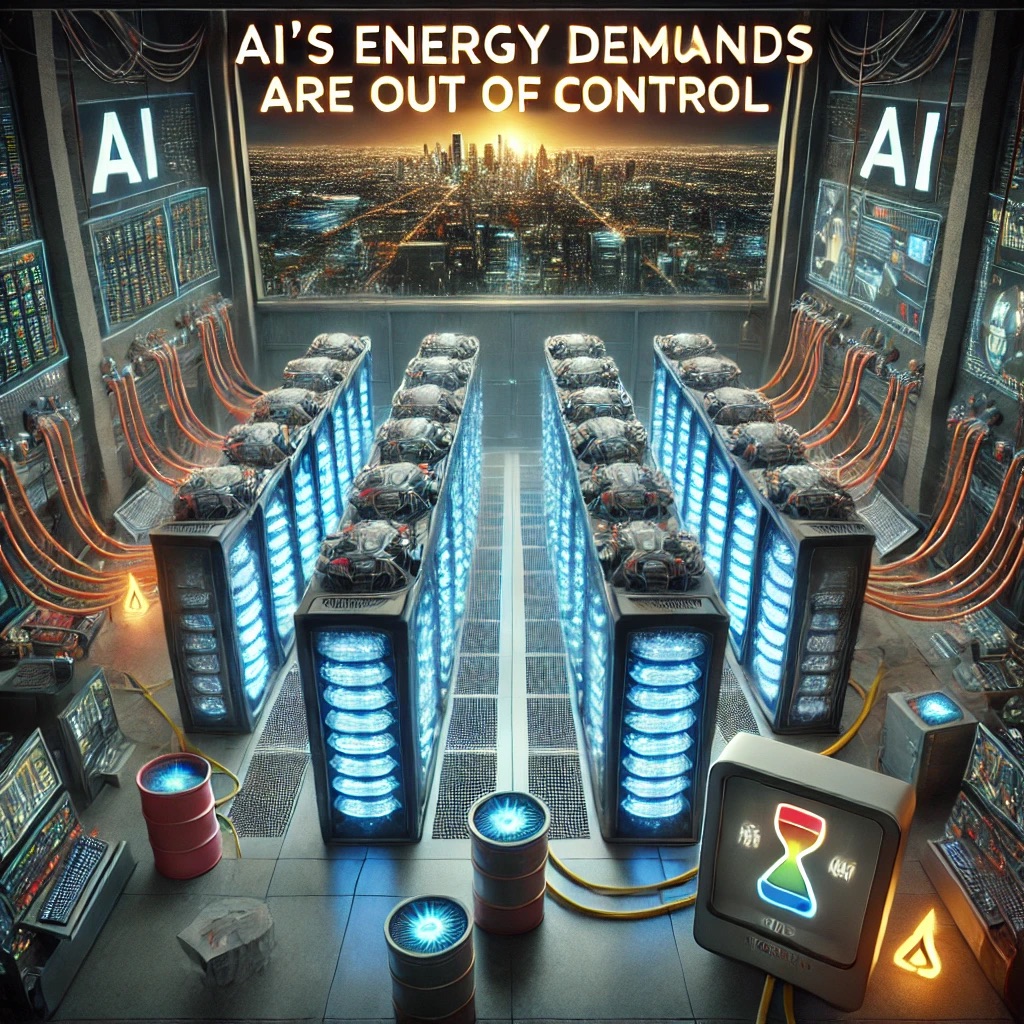Welcome to the Internet’s Hyper-Consumption Era
- Resource Intensive AI Models: Generative AI requires significantly more electricity and water, stressing local power grids and increasing carbon footprints.
- Environmental Impact: Data centers operating AI models consume vast amounts of water, exacerbating environmental concerns.
- Future Sustainability: Efforts are being made to transition to renewable energy sources and develop more efficient AI models to mitigate these impacts.

Generative artificial intelligence has become a pervasive part of our daily digital interactions, from AI-generated summaries in Google searches to Meta’s AI tools on Facebook. This widespread adoption, which took off with OpenAI’s release of ChatGPT in late 2022, has led to what many are calling the internet’s hyper-consumption era. The computational processes required to run these generative AI systems are vastly more resource-intensive than traditional computing tasks, leading to unprecedented demands on both electricity and water.
Resource Intensive AI Models
Unlike basic online services like Google Search or email, generative AI applications are exponentially more demanding in terms of computational power. According to Sajjad Moazeni, a computer engineering researcher at the University of Washington, these AI applications can be 100 to 1,000 times more computationally intensive. The growing need for such intensive computing has led to a significant increase in energy consumption at data centers. Google, for example, has seen its energy consumption double from 2019 to 2023.
The carbon footprint associated with these AI models is directly proportional to their computational demands. As these models grow in size and capability, their environmental impact increases correspondingly. This has led major tech companies like Microsoft to potentially compromise their sustainability goals in the race to develop the most advanced AI tools.
Environmental Impact
Beyond electricity, the water consumption of data centers is another pressing issue. Data centers that train and operate generative AI models consume millions of gallons of water, primarily for cooling purposes. Shaolei Ren, a researcher at UC Riverside, explains that these data centers evaporate water into the atmosphere, a process that delays its return to the earth’s surface by up to a year. This contrasts with residential water use, where water is typically returned to the sewage system immediately.
The environmental toll of AI extends beyond immediate energy and water usage. The manufacturing processes for servers, networking equipment, and other technical infrastructure required for data centers are also energy-intensive. These supply chains contribute significantly to the overall carbon footprint of AI development.
Future Sustainability
In response to these challenges, tech companies are exploring more sustainable practices. Microsoft, for instance, aims to be carbon negative, water positive, and zero waste by the end of the decade. This includes efforts to transition to renewable energy sources and develop more efficient hardware chips to reduce the energy needed for AI computations. Additionally, researchers are looking into the potential of smaller, less computationally demanding AI models.
However, the rapid growth of AI capabilities continues to strain local power grids, with some data centers competing with residents and businesses for electricity. Moazeni notes concerns in places like Quincy, Washington, where a Microsoft data center’s energy consumption has raised alarms about local power availability.
Despite these efforts, the integration of AI into everyday digital tools makes it challenging for users to avoid contributing to this hyper-consumption. AI features are now embedded in operating systems, web apps, and software programs, making it nearly impossible to navigate the internet without encountering them.
Ideas for Further Exploration
- Alternative Cooling Technologies: Investigating new cooling technologies for data centers that reduce water consumption.
- Regulatory Frameworks: Developing stricter regulatory frameworks to ensure that tech companies adhere to sustainable practices.
- Public Awareness Campaigns: Increasing public awareness about the environmental impact of AI and promoting more sustainable digital habits.
As generative AI continues to expand its reach, its environmental impact will need to be carefully managed. The race to develop advanced AI technologies must be balanced with the need for sustainable practices to mitigate their resource demands and ensure a greener future.
